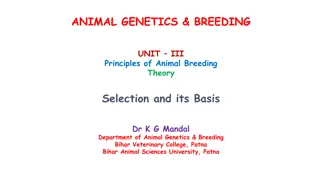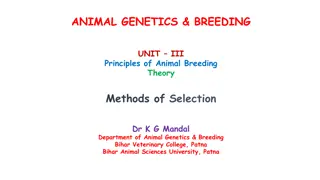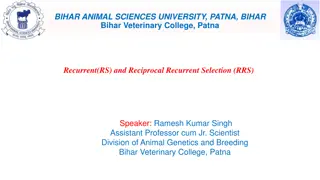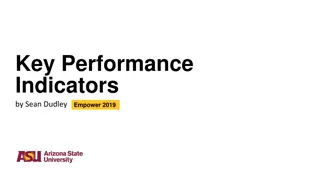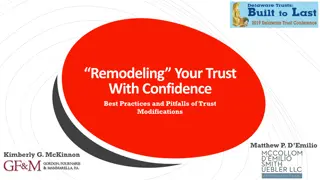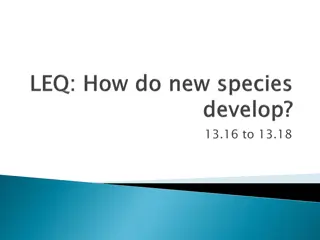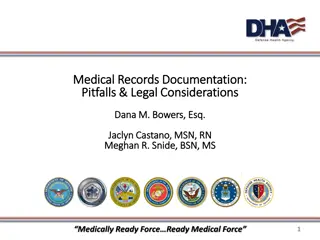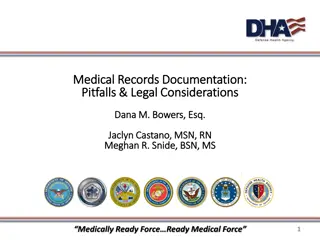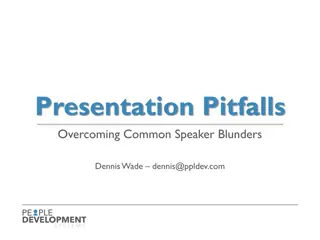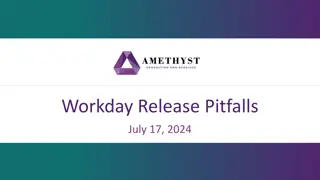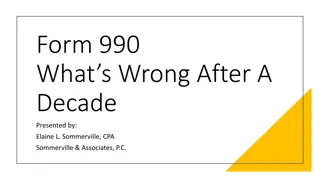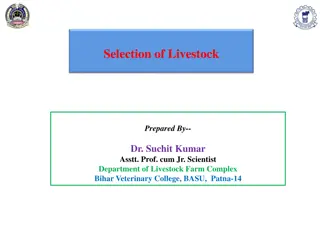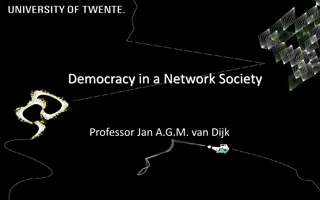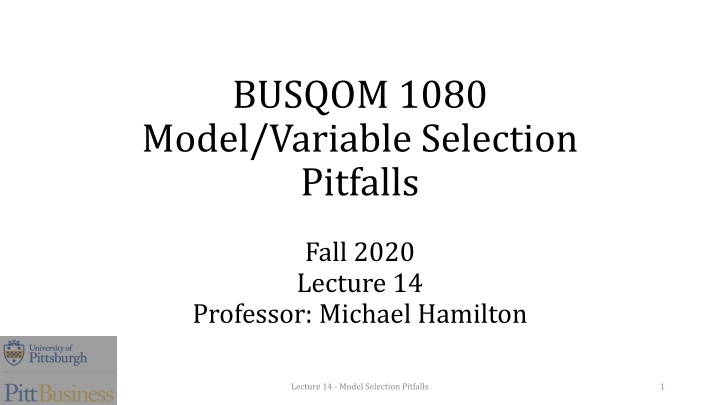
Avoiding Model Selection Pitfalls in Regression Analysis
Explore the dangers of P-hacking and overfitting in multiple regression models, uncovering how sample size impacts statistical significance and the risks of drawing conclusions from weak correlations. Learn to navigate the complexities of model selection to ensure accurate results.
Download Presentation

Please find below an Image/Link to download the presentation.
The content on the website is provided AS IS for your information and personal use only. It may not be sold, licensed, or shared on other websites without obtaining consent from the author. If you encounter any issues during the download, it is possible that the publisher has removed the file from their server.
You are allowed to download the files provided on this website for personal or commercial use, subject to the condition that they are used lawfully. All files are the property of their respective owners.
The content on the website is provided AS IS for your information and personal use only. It may not be sold, licensed, or shared on other websites without obtaining consent from the author.
E N D
Presentation Transcript
BUSQOM 1080 Model/Variable Selection Pitfalls Fall 2020 Lecture 14 Professor: Michael Hamilton Lecture 14 - Model Selection Pitfalls 1
Lecture Summary Today: Pitfalls of Multiple Regression 1. P-Hacking I: The effect of sample size on significance [10 Mins] 2. P-Hacking II: Find significance in noise with model selection [10 Mins] 3. Polynomial Regression and Overfitting [10 Mins] Lecture 14 - Model Selection Pitfalls 2
Review: Multiple Linear Regression Data: (yi, xi,1 , xi,2, ,xi,k) i.e. k pieces of numeric info per obs. Goalis to find coefficients of line : ? = ?0 + ?1?1, ,+ ??xk Coefficients are fit using OLS Method ??? ?0, ?1, , ?? ?(?? ?0 ?1 ??,1 ?? ??,?)2 Assumed Prob. Linear Model is now: ? = ?0+ ?1?1+ + ????+ ?, where ? ~ Norm(0,?2) Today we ll look at a few of the myriad of ways this can go wrong! Lecture 13 - Model Selection 3
P-hacking for Multiple Linear Regression p-hacking: is the misuse of data analysis to find patterns in data that can be presented as statistically significant (also known as data dredging, data fishing, etc.) In multiple regression, one common way to measure if the regression captures a significant linear relationship is by examining the p-value of the F Test. Two common ways of hacking this value: 1. Looking at data with extremely large sample size Almost everything has some correlation, but it can be extremely small and hugely outweighed by the noise making it useless/uninteresting 2. Searching over many many models for one that is significant p values measure how likely it would be to observe such a model under the null hypothesis, if you look at enough models you re likely to find outlier models Lecture 14 - Model Selection Pitfalls 4
P-values and Sample Size As the sample size of the data increases, so too does the confidence that the F test can pronounce that there is linear correlation, even if that correlation is hugely outweighed by the noise. Experiment: Suppose Y = .01*X + Norm(0,1), error outweighs the correlation and is insignif. for small sample size. Still there is a relationship, even if pointless and it will be found for large enough sample size. Lecture 14 - Model Selection Pitfalls 5
P-values and Sample Size In practice this can lead to strong evidence for extremely weak, borderline line nonexistent correlation. Often used to justify bizarre claims Example: Notes: There are a huge number of points, enable statistically significant correlation but the regressions don t pass the eye test. These are lines fitted to data which is primarily noise! Hard to draw any kind of sensible conclusion from this This is a case where R2 is helpful Lecture 14 - Model Selection Pitfalls 6
P-values and Choosing Models Another way to hack the p-value is to consider many models (either explicitly or implicitly). A p-value is a measure of how unlikely a model would be under the null hypothesis, if you examine many models and their p-values you re likely to find an unlikely one! To mitigate this, experimental design and features should be decided before the regression is run! This is especially a problem for best subset regression since that considers a ton of models! Can find great models on noise this way Experiment: Lecture 14 - Model Selection Pitfalls 7
P-values and Choosing Models In practice this can lead to some very weird associations between seemingly unrelated things! Pay close attention to the R2 when you hear there is a signif. association. Example: Notes: The data here is quite small, only a handful of countries much like our experiment in the last slide! You can imagine playing with different measures of promiscuity and economic well being until you hit on something significant . Lecture 14 - Model Selection Pitfalls 8
Interpolating Data for Inference/Prediction Math Fact: Higher order polynomial terms will improve the R2 of your prediction. With enough polynomial terms you can always perfectly fit your data! However just because you fit your data doesn t mean your model is useful or interesting! You can overfit, destroying any useful. Experiment: Lecture 14 - Model Selection Pitfalls 9
Interpolating Data for Inference/Prediction In practice this can be extremely misleading. It s often used to exaggerate or lie about trends in the data Example: The counsel of economic advisors (CEA) put out this cubic regression model fitting COVID deaths, and predicting (pink) the pandemic would end by April Notes: A cubic model would then go off to negative infinity, making it a bizarre model for prediction. To cover for this fact they literally drew on a trend line in pink that goes off to zero for the future (see red square) A 200 thousand more Americans have since died. The authors of this model continued to defend it until they resigned from the counsel. Otherwise, no consequences Lecture 14 - Model Selection Pitfalls 10






